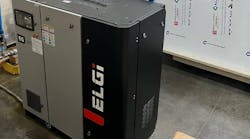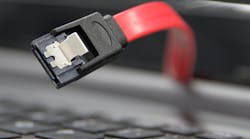Growing demand for quality, reliable data is now more business-critical than ever, forcing businesses to assess their infrastructure. Whether modernizing an existing data center, scaling up to meet business needs, or building a completely new network architecture, considerations must be made to ensure superior performance of today’s mission-critical data centers.
While your data center might be “out of sight, out of mind,” it is the central hub of your business from which information is generated. There are simple ways to increase organization, ease of use, and scalability within your network centers.
What to Do
Opt for Modularity:
Wire baskets provide the flexibility to create a grid system out of wire mesh trays. The 2 x 4 in. mesh allows for continuous airflow and prevents the buildup of heat, dust, bacterial proliferation, and other contaminants. With increased airflow reaching the cables, your facility will achieve increased energy efficiency, improved cooling capabilities, and reduced risk of interference.
Stronger is Better:
Even filled with maximum cables to code, the grid system is naturally stronger and lighter. To this point, it requires less frequent support locations, typically every 9 to 10 feet. This creates a domino effect of benefits. With less support locations needed there is more optimized space in the facility.
Save Labor Costs:
Because wire mesh cable trays are lighter in weight, it is possible for the installation to be completed by only one person, offering a savings of not only cost but time as well. This leads to the next consideration: cost and time savings.
Organize for Increased Efficiency:
Colored cable is a time-tested method of quickly and easily identifying different runs of cable at a glance. Wire baskets provide optimized visibility of wire paths, but even more so when color-coding is employed.
What Not To Do
Overfill:
Don't overload your baskets and get outside of code. Avoid using a tray system that is so big that it becomes bulky and hard to move. Rather, plan cabling pathways and proactively take into account parameters that influence cabling pathways including rack density, type/count/diameter of cables, end equipment cable entry, and room height.
Rely on Electro-Galvanized Steel:
Small but mighty zinc whiskers wreak havoc on sensitive electronic equipment by disrupting day-to-day equipment operations. Failures can include short circuits, voltage variances, signal disturbances, and complete system resets.
So how do you avoid these potentially damaging whiskers? The answer is simple: Reduce or eliminate the amount of whisker-producing electro-galvanized steel used in and under the server room. To do this, choose materials wisely—consider the difference between electroplated zinc and powder coating.










